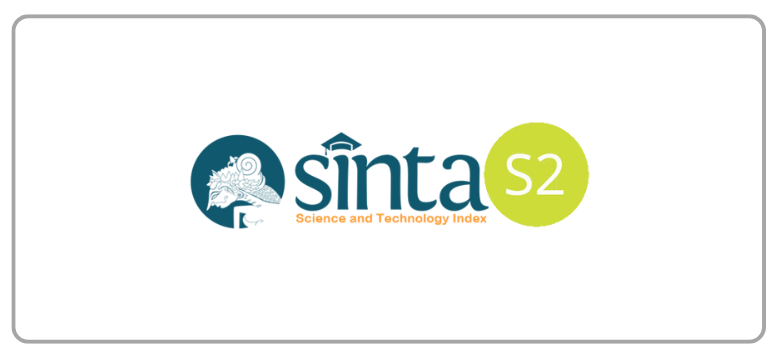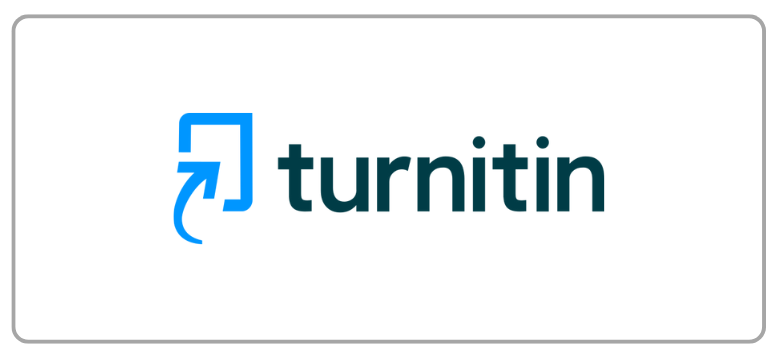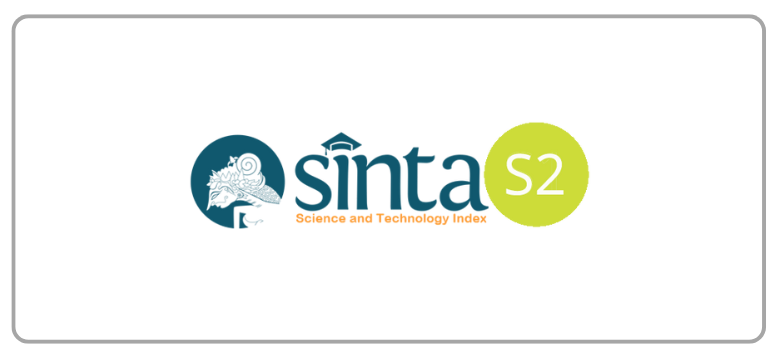Digitalization of Employee Performance Appraisal System: Ensuring Fairness and Transparency in Human Resource (HR) Practices in Steel Construction Company
Keywords:
Information Systems, Performance Appraisal, Web ApplicationAbstract
Digital transformation in human resource department (HRD) within performance appraisal process is initiated from employee management and supported by the commitment of leaders to create aspects of openness and fairness. In this context, PT. X Surabaya is a steel construction company that still carries out employee performance appraisal process manually, causing problems such as being considered unfair, non-transparent, and inaccurate in the assessment process, as well as frequent delays in the process. This causes feelings of unfairness and suspicion from employees, leading to a negative work atmosphere and impacting productivity and performance. Therefore, this research aims to design employee performance appraisal information system by applying Waterfall model as the development method. The novelty was the integration of human resource (HR) transformation from traditional to digital, by prioritizing the principles of fairness and transparency in the context of employee performance appraisal. This result showed that web-based performance appraisal information system effectively managed the appraisal process digitally, enabling leaders to monitor employee performance and enhance time efficiency. The existence of a system prioritizes transparency and fairness because the assessment process was carried out in two directions, from leaders to employees. Therefore, employee welfare and job satisfaction were improved due to effective and objective assessment.
References
Al Athmay, A. A. A., Fantazy, K., & Abdul Rahim, R. A. A. (2025). The Adoption of Human Resource Information System (HRIS) and Employees Engagement: Evidence from United Arab Emirates. Journal of the Academy of Business and Emerging Markets, 5(1), 3–14.
Bindra, S., Bhattacharya, S., & Bhattacharya, S. (2025). Traditional to digital: human resource management transformation. Journal of Work-Applied Management, September. https://doi.org/10.1108/JWAM-02-2025-0019
Fahmi, T. (2024). Transformasi Digital dan Pengaruhnya Terhadap Budaya Organisasi: Tinjauan Literatur Sistematis. Jurnal Manajemen Akuntansi Dan Ilmu EKonomi, 1(1), 101–109.
Fajerin, T., & Mulyono, H. (2020). Analisis Dan Perancangan Sistem Informasi Layanan Publik Berbasis Web Pada Dinas Kependudukan Dan Pencatatan Sipil Kabupaten Tanjung Jabung Barat. Jurnal Manajemen Sistem Informasi, 5(3), 406–417.
Faradita, N. A., Hamidah, W., & Armansyah, A. (2024). Desain Sistem Pengadaan Barang Inventaris dengan Pendekatan SDLC dan Waterfall. Jurnal Penelitian Sistem Informasi (Jpsi), 2(2), 39–50. https://doi.org/10.54066/jpsi.v2i2.1791
Garengo, P., Sardi, A., & Nudurupati, S. S. (2022). Human resource management (HRM) in the performance measurement and management (PMM) domain: a bibliometric review. International Journal of Productivity and Performance Management, 71(7), 3056–3077. https://doi.org/10.1108/IJPPM-04-2020-0177
Habibi, R., & Manurung, A. G. R. (2023). SLR Systematic Literature Review: Metode Penilaian Kinerja Karyawan Menggunakan Human Performance Technology. Journal of Applied Computer Science and Technology, 4(2), 100–107. https://doi.org/10.52158/jacost.v4i2.511
Idrus, S., Ruhana, F., Amalia, M. R., Rosyid, A. F., & Kuswandi, D. (2023). Implementasi Kebijakan Manajemen Sumber Daya Manusia Yang Efektif Dalam Meningkatkan Kinerja Organisasi Di Era Bisnis Global. Jurnal Ilmiah Manajemen, Ekonomi, & Akuntansi (MEA), 7(1), 72–89. https://doi.org/10.31955/mea.v7i1.2879
Kadim, A. A., Sutriana, I. K., & Masir, I. H. (2022). Perancangan Sistem Aplikasi Layanan Kelurahan Berbasis Web. Jambura Journal of Informatics, 4(1), 38–48. https://doi.org/10.37905/jji.v4i1.13206
Khaeruman, Suflani, Mukhlis, A., & Romli, O. (2023). Analisis Efektivitas Strategi Penilaian Kinerja Dalam Meningkatkan Produktivitas Karyawan di Indomaret Kota Serang. Jurnal Manajemen STIE Muhammadiyah Palopo, 9(2), 352. https://doi.org/10.35906/jurman.v9i2.1903
Kirana, A. Y., Saifudin, M., Mukhlisin, M. M., Fatmawati, N., & Ansori, M. I. (2023). Transformasi Digital terhadap Sumber Daya Manusia sebagai Upaya Meningkatkan Kapabilitas Perusahaan. Digital Bisnis: Jurnal Publikasi Ilmu Manajemen Dan E-Commerce, 2(4), 19–36. https://doi.org/10.30640/digital.v2i4.1707
Kusuma, H. (2023). Perancangan Website Penjualan Suku Cadang Motor Pada Bengkel D’LIGHTS Batang Tarang. Seminar Nasional Corisindo, 401–405.
Montero Guerra, J. M., Danvila-del-Valle, I., & Méndez Suárez, M. (2023). The impact of digital transformation on talent management. Technological Forecasting and Social Change, 188(October 2022). https://doi.org/10.1016/j.techfore.2022.122291
Musthofa, N., & Adiguna, M. A. (2022). Perancangan Aplikasi E-Commerce Spare-Part Komputer Berbasis Web Menggunakan CodeIgniter Pada Dhamar Putra Computer Kota Tangerang. OKTAL: Jurnal Ilmu Komputer Dan Sains, 1(03), 199–207.
Nurramadhania, A. (2023). Pengelolaan Sumber Daya Manusia (SDM) Yang Efektif Untuk Meningkatkan Kinerja Organisasi. Ulil Albab: Jurnal Ilmiah Multidisiplin, 3(1), 83–89.
Pasaribu, N. T., Masrizal, & Harahap, S. Z. (2024). Rancang Bangun Sistem Informasi Anime Premium dan Non Premium Berbasis Web Dengan Menggunakan Metode Waterfall. INFORMATIKA: Jurnal Ilmiah Fakultas Sains & Teknologi Universitas Labuhanbatu, 12(1), 105–117.
Priyatna, A., Susanto, I., & Sevtiana, A. (2022). Perancangan Knowledge Management System Berbasis Web Untuk Meningkatkan Kinerja Karyawan Menggunakan Metode Rapid Application Development (Rad) (Studi Kasus : Pt. Citra Kreasi Makmur). Jurnal Digit, 12(2), 214. https://doi.org/10.51920/jd.v12i2.297
Raja, M., Swamy, T. N. V. R. L., Das, S., Bansal, R., Fahlevi, M., & Aziz, A. L. (2025). Does a human resource information system influence performance management? Cogent Business and Management, 12(1). https://doi.org/10.1080/23311975.2024.2438862
Rosadi, A. A. S., & Purnomo, Y. J. (2020). Pengaruh Sistem Informasi Sumber Daya Manusia Terhadap Kinerja Pada Pegawai PT Raudah Utama Cianjur. Jurnal Sains Sosio Humaniora, 4(2), 357–367. https://doi.org/10.22437/jssh.v4i2.10865
Saputri, L. A., Maulana, M. I., Istiqomah, N. K., & Ratnawati, I. (2024). Tantangan Dan Strategi Manajemen Sumber Daya Manusia Di Era Transformasi Digital: Studi Literatur. Manajemen Business Innovation Conference-MBIC, 7, 902–919.
Supiyandi, S., Zen, M., Rizal, C., & Eka, M. (2022). Perancangan Sistem Informasi Desa Tomuan Holbung Menggunakan Metode Waterfall. JURIKOM (Jurnal Riset Komputer), 9(2), 274. https://doi.org/10.30865/jurikom.v9i2.3986
Utama, S. T. (2021). Pengaruh disiplin kerja dan pengembangan karir sumber daya manusia terhadap kinerja dan prestasi perusahaan. JMPIS: Jurnal Manajemen Pendidikan Dan Ilmu Sosial, 2(1), 281–287. https://doi.org/https://doi.org/10.38035/jmpis.v2i1
Wartono, T. (2025). Analisis Implementasi Sistem Informasi Sumber Daya Manusia (SISDM) Dalam Meningkatkan Efisiensi Proses Rekrutmen dan Seleksi di Perusahaan Multinasional. Jurnal Review Pendidikan Dan Pengajaran, 8(1), 1158–1164.
Downloads
Published
How to Cite
Issue
Section
License
Copyright (c) 2025 Alexander Wirapraja, Rizky Basatha, Fanny Megawati Manggaetan

This work is licensed under a Creative Commons Attribution-ShareAlike 4.0 International License.
Authors who publish with this journal agree to the following terms:
a. Authors retain copyright and grant the journal right of first publication with the work simultaneously licensed under a Creative Commons Attribution License - Share Alike that allows others to share the work with an acknowledgment of the work's authorship and initial publication in this journal.
b. Authors are able to enter into separate, additional contractual arrangements for the non-exclusive distribution of the journal's published version of the work (e.g., post it to an institutional repository or publish it in a book), with an acknowledgment of its initial publication in this journal.
c. Authors are permitted and encouraged to post their work online (e.g., in institutional repositories or on their website) prior to and during the submission process, as it can lead to productive exchanges, as well as earlier and greater citation of published work.
USER RIGHTS
All articles published Open Access will be immediately and permanently free for everyone to read and download. We are continuously working with our author communities to select the best choice of license options, currently being defined for this journal as follows: Creative Commons Attribution-Share Alike (CC BY-SA)

















